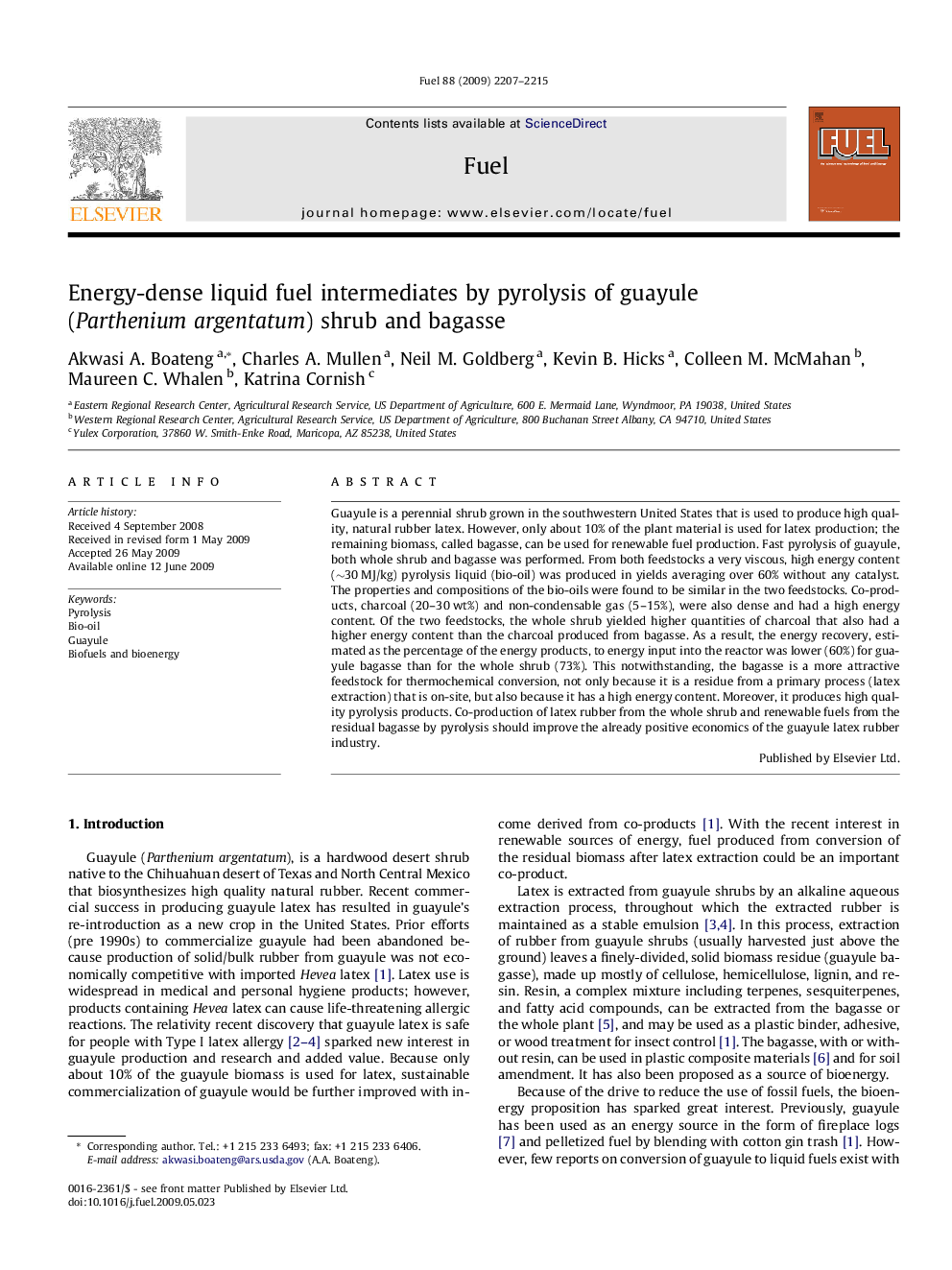| Article ID | Journal | Published Year | Pages | File Type |
|---|---|---|---|---|
| 206710 | Fuel | 2009 | 9 Pages |
Guayule is a perennial shrub grown in the southwestern United States that is used to produce high quality, natural rubber latex. However, only about 10% of the plant material is used for latex production; the remaining biomass, called bagasse, can be used for renewable fuel production. Fast pyrolysis of guayule, both whole shrub and bagasse was performed. From both feedstocks a very viscous, high energy content (∼30 MJ/kg) pyrolysis liquid (bio-oil) was produced in yields averaging over 60% without any catalyst. The properties and compositions of the bio-oils were found to be similar in the two feedstocks. Co-products, charcoal (20–30 wt%) and non-condensable gas (5–15%), were also dense and had a high energy content. Of the two feedstocks, the whole shrub yielded higher quantities of charcoal that also had a higher energy content than the charcoal produced from bagasse. As a result, the energy recovery, estimated as the percentage of the energy products, to energy input into the reactor was lower (60%) for guayule bagasse than for the whole shrub (73%). This notwithstanding, the bagasse is a more attractive feedstock for thermochemical conversion, not only because it is a residue from a primary process (latex extraction) that is on-site, but also because it has a high energy content. Moreover, it produces high quality pyrolysis products. Co-production of latex rubber from the whole shrub and renewable fuels from the residual bagasse by pyrolysis should improve the already positive economics of the guayule latex rubber industry.
